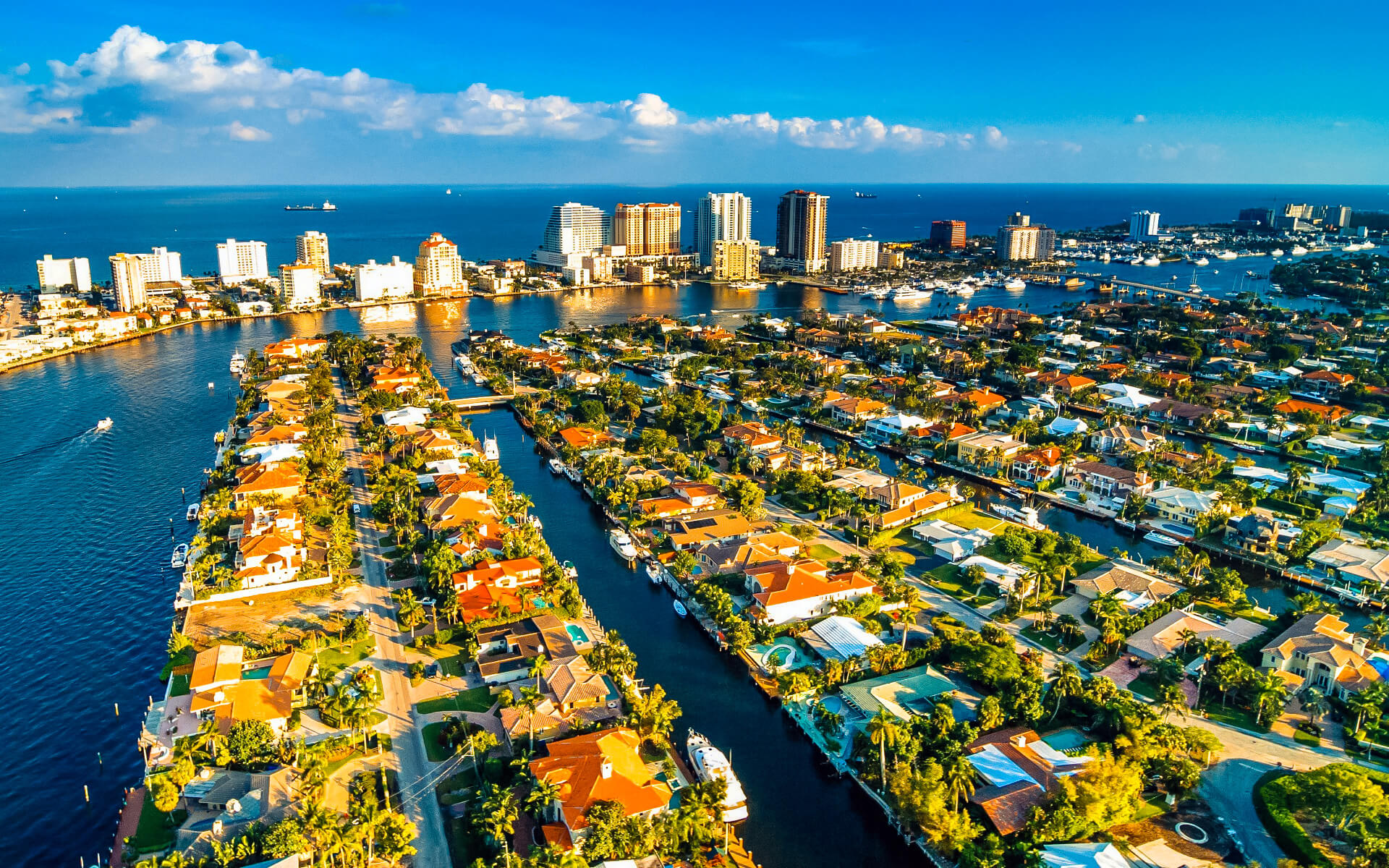Fort Lauderdale is a city on the Atlantic Ocean in the United States of America’s state of Florida. Due to its extensive canal system, it is dubbed the “Venice of America.” The city is located in Broward County, South Florida, and has a population of more than 170,000.
While the city of Fort Lauderdale is most known for its beaches and boats, the name ‘Fort Lauderdale’ is often used to refer to the greater metropolis that has built up around it. It is the county capital of Broward county and is included in the Miami-Fort Lauderdale-West Palm Beach metropolitan region, which has a population of more than 5.5 million.
When is common of many sections of Florida, the city’s population fluctuates significantly throughout the winter and early spring, as snowbirds from the north spend their winters in Florida. The city is sometimes occasionally referred to as “Fort Liquordale” because to its beaches, bars, and nightclubs, as well as its past as a spring break destination for tens of thousands of college students in the 1960s and 1970s. Since the mid-1980s, however, the city has deliberately prevented college students from visiting the region, enacting stringent restrictions intended at averting the mayhem that happened each year. For spring break 1985, the city received an estimated 350,000 college tourists; by 2006, that number had dwindled to under 10,000.
The territory was initially settled by Seminole Indians in the 18th century. Major William Lauderdale led his Tennessee Volunteers into the region during the Second Seminole War and established New River Fort on the location of the current city in 1838. Frank Stranahan, a young Ohioan, came in 1893 and erected a home that functioned as the area’s first trade post, post office, bank, and town hall. Stranahan House was constructed on the site of the New River Fort and still remains today as a museum.
In 1911, Fort Lauderdale was founded as a municipality and became the county seat of newly constituted Broward County. It originated as an agricultural hamlet dominated by dairy farms and citrus orchards.
Additional expansion occurred as a result of the building of the Naval Air Station, which is today known as the Fort Lauderdale/Hollywood International Airport.
Following the conclusion of World War II and the introduction of residential air-conditioning, the city and its neighboring suburbs witnessed unprecedented expansion. Fort Lauderdale became the epicenter of Spring Break in the 1960s with the release of the film “Where the Boys Are.” It is presently the focal point of the Miami-Fort Lauderdale-West Palm Beach Metropolitan Region, the country’s sixth biggest metropolitan area.
SITES OF INTEREST
Apart from museums, beaches, and nightlife, Fort Lauderdale is home to the Fort Lauderdale Swap Shop, a major indoor/outdoor flea market, and the world’s biggest drive-in movie theater, including 13 screens.
The International Swimming Hall of Fame is situated on the beach in Fort Lauderdale and has a vast aquatic complex, as well as a museum, theater, and research library.
Hugh Taylor Birch State Park is a 180-acre (0.73-kilometer-square) beachfront park featuring nature trails, camping and picnic spaces, canoeing, and the Terramar Visitor Center, which contains exhibits about the park’s environment. In 1893, Hugh Taylor Birch arrived in Florida. He acquired oceanfront land at a cost of around a dollar per acre and ultimately owned a 3.5-mile length of coastline. The Bonnet House is a historic residence located in Fort Lauderdale, Florida. The contemporary history of Bonnet House started in 1919, when Birch gifted the property to his daughter Helen and her husband, Chicago artist Frederic Clay Bartlett. The property was added to the National Register of Historic Places in 1984 and the City of Fort Lauderdale designated it a historic monument in 2002.
The Henry E. Kinney Tunnel on US Route 1 is Florida’s sole tunnel on a state route. It was built in 1960 and runs for 864 feet (263 meters) under the New River and Las Olas Boulevard.
The Florida Everglades is a famous attraction for tourists to Fort Lauderdale. Numerous transportation options exist to transport guests from Fort Lauderdale Beach to the Everglades. The Riverwalk Arts and Entertainment District in downtown Fort Lauderdale is only minutes from the ocean and is home to cultural activities, shopping, parks, and restaurants. Discover the Broward Center for the Performing Arts, the Museum of Discovery and Science with its AutoNation 3D IMAX Theater, the Florida Grand Opera, the Fort Lauderdale Historical Center, Stranahan House, and the Museum of Art along Riverwalk, the brick-lined meandering boulevard.
Las Olas Boulevard is a bustling highway in downtown Fort Lauderdale, connecting Andrews Avenue in the Central Business District to A1A and Fort Lauderdale Beach. The boulevard is a popular destination for residents and tourists alike, since it is conveniently located near Fort Lauderdale beach, the Fort Lauderdale-Hollywood International Airport, and Port Everglades. It is often regarded as the most architecturally distinctive, genuine, and quirky retail and eating area in South Florida.


